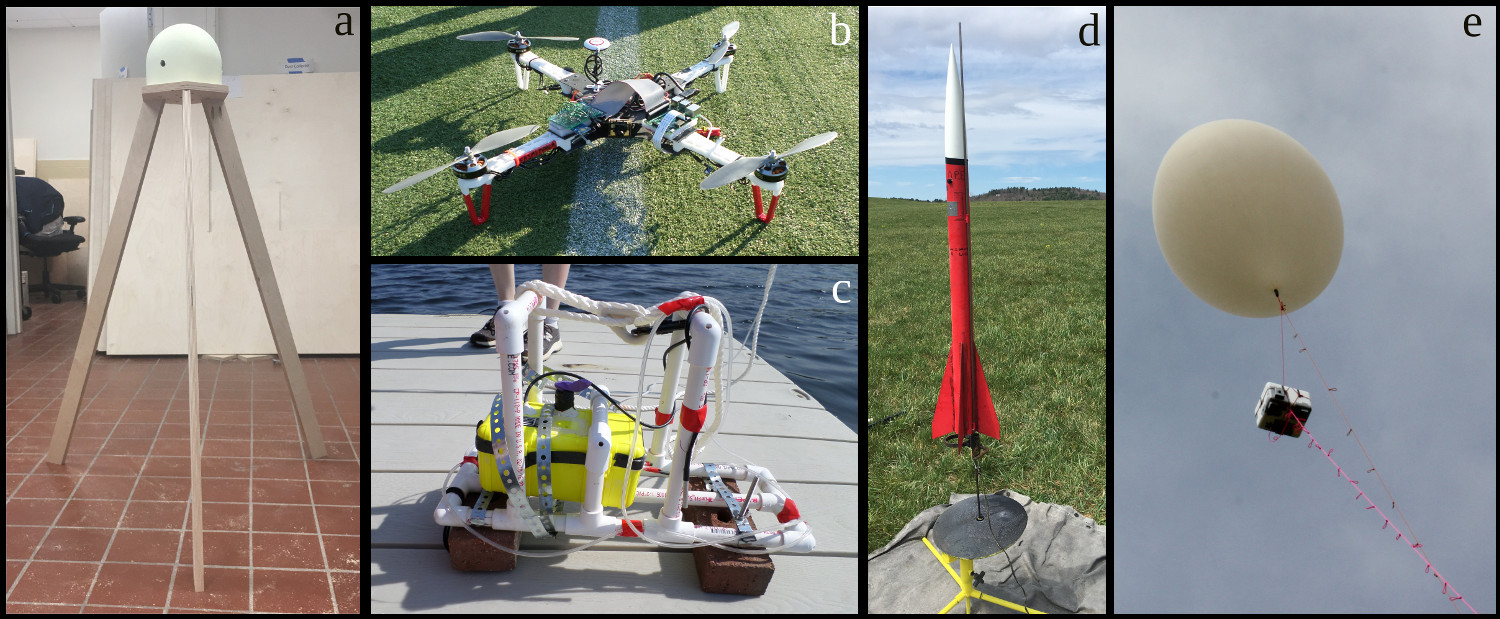|
Wesley Andrés Watters / Courses  Titan (left), Namacalathus hermanastes (center), Mars (right) ASTR 202: Hands-on Planetary Exploration / Alt. springs Develop your own planetary mission and build your own scientific probe in this project-based course about the practice of planetary exploration! Students will learn about the science and technology of exploring extreme environments through (a) investigating historical missions to other planets and extreme environments on Earth; (b) using spaceflight simulation software to simulate mission scenarios; and (c) building their own instrumented probe to investigate a challenging environment such as the Earth's lower atmosphere or the bottom of Lake Waban. Students will gain a working knowledge of basic electronics and computer programming as part of their work on the term project. Daily Shot description by Elizabeth Lund. Projects from Spring 2016:  Above: (a) LIL PHO (b) QuEEnBAE (c) YELLO (submarine) (d) HAWK (e) HAB Solo / 1Luftballon; Below (left to right, top to bottom): views from 1Luftballon, HAB SOLO, YELLO, and QuEEnBAE.  ASTR 100: Life in the Universe / Usually in fall terms In this course we'll explore some of the biggest questions that anyone has ever posed. How did life come about? What are the conditions for life elsewhere, and where else might we find life in the cosmos? What has been the history of life on Earth, and what will be its future? Are there other intelligent civilizations in the universe? Although ``life'' is in the title, this is an astronomy course: we will focus on environments for life in the universe, and the larger context in which life emerged. We will explore the fields of planetary science (the study of planets in our solar system), exoplanetary astronomy (the study of planets around other stars), and astrobiology (the study of life in extreme environments and the search for extra-terrestrial life). I will pepper the course with current events from all three of these fields, such as recent finds of ancient fossils, newly-discovered planets, and frequent updates from the Opportunity rover on Mars. This is an unusual kind of science course because it integrates material from many different disciplines, including geology, biology, physics, and astronomy. This is also what makes it a lot of fun: we have the chance to explore the connections between these fields and begin to see how science works as an integrated system of knowledge about the natural world. ASTR/GEOS 223/323: Planetary Atmospheres and Climates / Alt. springs Have you wondered what Earth's climate was like 3 billion years ago? What about weather patterns on Titan and climate change on Mars? In this course, we'll explore the structure and evolution of atmospheres and the climate on four worlds: the Earth, Mars, Venus, and Saturn's moon Titan. We'll examine the techniques and tools that geologists use to learn about the history of Earth's climate and that planetary scientists use to learn about the atmospheres and surface environments on other worlds. Students will also gain experience simulating the climate system and computing atmospheric properties. Other topics include: the super-rotation of Venus's atmosphere and its Runaway Greenhouse climate, the destruction of atmospheres on low-gravity worlds, and the future of Earth's climate as the Sun grows steadily brighter. ASTR 203/303 / GEOS 213/313: Planetary Geology / Alt. springs Spacecraft observations have revealed a breathtaking diversity of geologic features in the solar system, from ancient river valleys on Mars and violent volcanic eruptions on Io to ice fountains on Enceladus and the complex surfaces of comets and asteroids. From a comparative point of view, this course examines the formation and evolution of the planets and small bodies in the solar system. Topics include planetary shape, volcanism, tectonism, impacts, aeolian processes, gravity anomalies, and tides. Last updated 2016.07.21+10.40. |